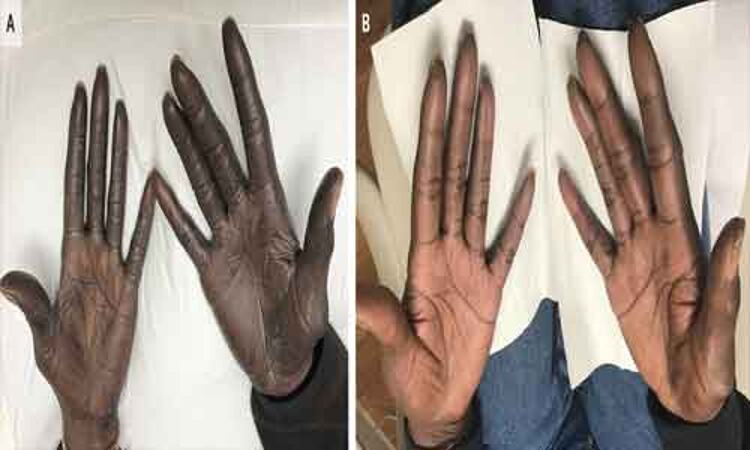- Home
- Medical news & Guidelines
- Anesthesiology
- Cardiology and CTVS
- Critical Care
- Dentistry
- Dermatology
- Diabetes and Endocrinology
- ENT
- Gastroenterology
- Medicine
- Nephrology
- Neurology
- Obstretics-Gynaecology
- Oncology
- Ophthalmology
- Orthopaedics
- Pediatrics-Neonatology
- Psychiatry
- Pulmonology
- Radiology
- Surgery
- Urology
- Laboratory Medicine
- Diet
- Nursing
- Paramedical
- Physiotherapy
- Health news
- Fact Check
- Bone Health Fact Check
- Brain Health Fact Check
- Cancer Related Fact Check
- Child Care Fact Check
- Dental and oral health fact check
- Diabetes and metabolic health fact check
- Diet and Nutrition Fact Check
- Eye and ENT Care Fact Check
- Fitness fact check
- Gut health fact check
- Heart health fact check
- Kidney health fact check
- Medical education fact check
- Men's health fact check
- Respiratory fact check
- Skin and hair care fact check
- Vaccine and Immunization fact check
- Women's health fact check
- AYUSH
- State News
- Andaman and Nicobar Islands
- Andhra Pradesh
- Arunachal Pradesh
- Assam
- Bihar
- Chandigarh
- Chattisgarh
- Dadra and Nagar Haveli
- Daman and Diu
- Delhi
- Goa
- Gujarat
- Haryana
- Himachal Pradesh
- Jammu & Kashmir
- Jharkhand
- Karnataka
- Kerala
- Ladakh
- Lakshadweep
- Madhya Pradesh
- Maharashtra
- Manipur
- Meghalaya
- Mizoram
- Nagaland
- Odisha
- Puducherry
- Punjab
- Rajasthan
- Sikkim
- Tamil Nadu
- Telangana
- Tripura
- Uttar Pradesh
- Uttrakhand
- West Bengal
- Medical Education
- Industry
Rare case of Fluorouracil -Induced Hyperpigmentation

Dr Jordan K. Schaefer and Dr Nithya Ramnath at the University of Michigan, Ann Arbor, MI have reported a rare case of Fluorouracil-Induced Hyperpigmentation. The case has been published in the New England Journal of Medicine.
Adverse cutaneous reactions to medications are a common reason for consultations with dermatologists. Drug-induced skin disorders may manifest in a variety of ways. Drugs may cause exanthems, urticaria, hypersensitivity syndromes, pustular eruptions, erythema multiforme, toxic epidermal necrolysis, cutaneous necrosis, and abnormal pigmentation of the skin and mucosa. Although pigmentary changes caused by drugs usually result in a limited degree of morbidity, these changes may be very disturbing to the patient.
For several decades, 5-Fluorouracil (5-FU) has been the backbone of many chemotherapy regimens for various tumor types. Its most common side effects are gastrointestinal disorders, mucositis, myelosuppression, hand-foot syndrome, and rarely cardiac toxicity.
5-Fluorouracil (5-FU) is an antimetabolite frequently used in the treatment of cancer. The most common adverse reactions are acute gastrointestinal effects and bone marrow suppression hand-foot syndrome, and rarely cardiac toxicity.
In addition to this neurological, ocular and dermatological toxicities are unusual. Several cutaneous manifestations can be found. They are hyperpigmentation, maculopapular eruption and palmar-plantar erythrodysesthesia (PPES) promptly reversed with discontinuation of 5-FU.
According to history, a 57-year-old man with stage 3b colon cancer presented to the medical oncology clinic for adjuvant chemotherapy. Seven weeks earlier, he had undergone a right hemicolectomy, and the pathological examination had revealed moderately differentiated adenocarcinoma, with 2 of 19 pericolonic lymph nodes positive for metastasis. Chemotherapy with FOLFOX (leucovorin [folinic acid], fluorouracil, and oxaliplatin) was initiated. After two cycles, he noted progressive darkening of his palms that were not associated with redness, scaling, or pain. The plantar aspects of his feet were minimally affected, but the remainder of his skin was normal. These findings worsened after the third cycle of chemotherapy. In addition to worsening palmar hyperpigmentation, grade 4 neutropenia and grade 3 fatigue developed, and chemotherapy was discontinued. Skin hyperpigmentation is a side effect of various chemotherapy drugs, including fluorouracil; the condition variably improves after treatment is stopped. One month after the patient's chemotherapy was discontinued, the hyperpigmentation had faded considerably, and by 2 months, his palms had returned to near-baseline appearance,
For further reference log on to DOI: 10.1056/NEJMicm1909329
Hina Zahid Joined Medical Dialogue in 2017 with a passion to work as a Reporter. She coordinates with various national and international journals and association and covers all the stories related to Medical guidelines, Medical Journals, rare medical surgeries as well as all the updates in the medical field. Email: editorial@medicaldialogues.in. Contact no. 011-43720751
Dr Kamal Kant Kohli-MBBS, DTCD- a chest specialist with more than 30 years of practice and a flair for writing clinical articles, Dr Kamal Kant Kohli joined Medical Dialogues as a Chief Editor of Medical News. Besides writing articles, as an editor, he proofreads and verifies all the medical content published on Medical Dialogues including those coming from journals, studies,medical conferences,guidelines etc. Email: drkohli@medicaldialogues.in. Contact no. 011-43720751


